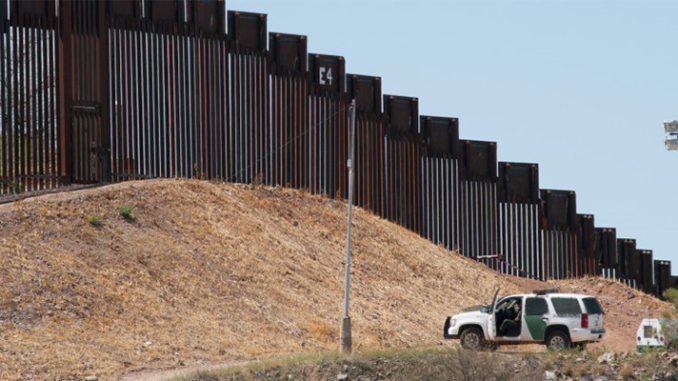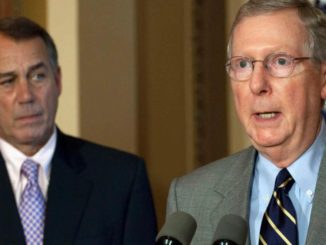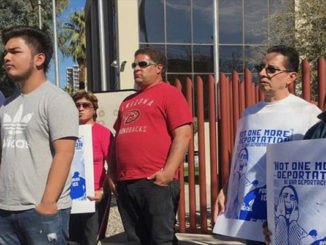
In the latest edition of the Cato Journal, economist Bryan Roberts argues that immigration enforcement has significantly diminished the flow of illegal immigrants across the Southwest border. Contra Roberts, sociologist Doug Massey argues that border enforcement had virtually no impact on the flow of unlawful immigrants prior to 2010. This post takes a slightly different approach and uses additional sources of data to look at the causes behind the decline of illegal immigration in the aftermath of the Great Recession. This is especially relevant as the House Judiciary Committee is marking up the Agricultural Guest Worker Act (Ag Act) that would increase the flow of temporary visas for workers in farming and related sectors. An increase in visas like those supplied by the Ag Act will likely further diminish unauthorized border crossings.
Model and Data
This blog is intended to reveal whether the quantity of Mexican legal immigrants (green cards issued overseas and temporary migrants) or border security is responsible for the decline of illegal immigrants from Mexico. Our dependent variable is the estimated gross annual flow of Mexican illegal immigrants. The American unemployment rate, the difference between Mexican and American GDP per capita (PPP), line-watch hours at the Southwest border, and legal Mexican immigration are our independent variables.
We chose a log-linear OLS model to compensate for non-linearity. OLS is a type of regression that helps identify the relationship between independent variables that we anticipate will explain how dependent variables behave. We then ran an autoregressive model (AR (1)) that will help us account for a particular empirical anomaly, the serial dependence between current and immediate past variables that could affect an OLS regression. We then ran a series of regressions with the yearly aggregates beginning in 1960 and ending in 2009. Data limitations prevented us from going beyond 2009 and prior to 1960.
Technical Note
We also ran numerous OLS, bi-weight, quantile, and AR(1) regressions that we excluded from Table 1 because they did not change the significance or signs of any of the coefficients. We tried sample-specific dummies for the combined datasets that did not change the significance of signs.
Data
Massey and Pren (2012) and Warren and Warren (2013) supply the estimates for the annual gross number of illegal Mexican entries. Annual Immigration Yearbooks from the Department of Homeland Security and the old Immigration and Naturalization Service supply the number of temporary and permanent visas issued to Mexicans abroad. The Bureau of Labor Statistics supplied the American unemployment rate data and the World Bank supplied the relative U.S.-Mexican GDP per capita PPP.
Results
Table 1 reports results of the OLS regression (with robust standard errors in parentheses) and AR(1) for three datasets: the Massey and Pren (2012) data, the Warren and Warren (2013) data, and a combination of the two. When running AR(1), we included a lagged immigrant flow for the independent variable because immigrant flows tend to be dependent on the flows of the immediate past. We also included a lag of legal visas and GDP per capita PPP where we assume the decision to immigrate is based on the immediate past state of the economy and legal immigration trends.
Our most robust finding is that more legal visas reduce the flow of illegal immigrants (Table 1). The variable is significant in five out of the six specifications. Line-watch hours are positively correlated with the flow of illegal immigrants in two specifications and negatively so in one. This isn’t surprising as Congress increases border security in response to greater unlawful immigrant flows. A higher unemployment rate is negatively related to illegal immigrant flows in three specifications while the difference between Mexican and U.S. GDP PPP is significant at the 5 percent level in only one.
Table 1
Effects of Legal Visas and Border Security on Gross Illegal Immigrant Flow for Mexicans
| Massey and Pren | Combined M&P and Warren & Warren | Warren & Warren | ||||
| OLS | AR (1) | OLS | AR (1) | OLS | AR (1) | |
| Legal visas | -1.34(.16)*** | -.16(.06)** | -1.20(.15)*** | -.08(.04)* | -.40(.16)* | -.08(.13) |
| Line-watch hours | .76(.14)*** | -.09(.05)** | 1.28(.13)*** | -.03(.05) | .08(.12) | -.04(12) |
| Unemployment USA | .15(.09) | .02(.01) | .06(0.8) | -.05(.01)*** | -.17(.03)*** | -.05(.02)** |
| USA-Mexico GDP (PPP) | .28(.38) | -.25(.11)** | .24(.36) | -.02(.08) | -.25(.14) | -.01(.10) |
| Observations | 49 | 48 | 49 | 48 | 28 | 27 |
| RSQ | .59 | .98 | .67 | .95 | .59 | .88 |
* significant at 10%; ** significant at 5%; *** significant at 1%.
Standard errors in parentheses.
Figure 1 shows the statistically significant inverse relationship between the number of visas issued to Mexicans and the gross flow of illegal Mexican entries. The early period with a high number of legal entries shows the Bracero program. It is followed by a spike in gross Mexican illegal inflows that occurred when the number of legal entries is very low. The number of gross Mexican illegal entries declines most especially as the number of new entries increases in the 1990s and 2000s. We suspect that this relationship is causal – that more legal immigration reduces the flow of unlawful immigrants.
Figure 1
Annual Flows of Legal and Illegal Mexican Immigrants

Sources: Massey and Pren (2012), USCIS, and INS.
Conclusion
This simple OLS regression analysis shows an inverse relationship between flows of Mexican legal and illegal immigrants. These findings cry out for additional research to test how the number of visas affects illegal immigrant flows, especially by examining other measures of border security such as budgets, the number of agents, or apprehensions. The findings of this blog are broadly consistent with asmallempiricalliterature on how border security affects immigration flows. Other researchers should use a more complicated model to account for the dynamics of illegal immigration, such as feedback effects that occur between border security and illegal flow. Time-series methods are one way to potentially address these effects. Regardless, this is some evidence that supports the theory that immigration liberalization will reduce illegal immigrant flows.
Special thanks to Jen Sidorova for her superb work on this blog post and the empirics that support it.
Alex Nowrasteh is an immigration policy analyst at the Cato Institute’s Center for Global Liberty and Prosperity.



